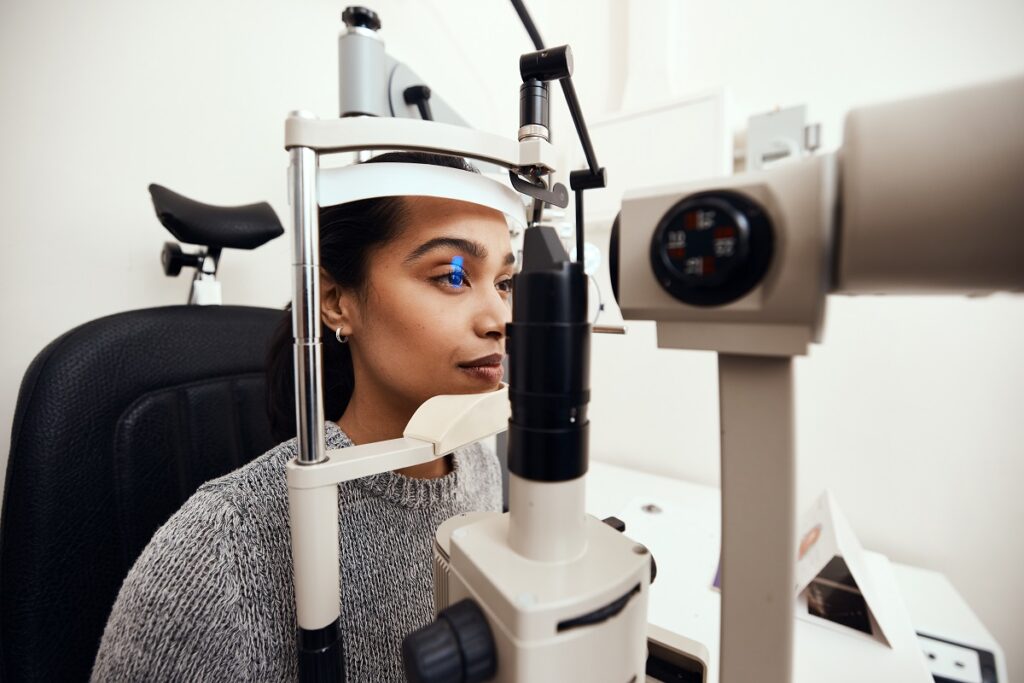Exactly How an Eye Doctor Can Help Avoid Vision Complications in Chino
Exactly How an Eye Doctor Can Help Avoid Vision Complications in Chino
Blog Article
Discovering the most up to date Technical Developments in Optometry and What They Mean for Optometrists
From the precision of Optical Coherence Tomography to the nuanced insights supplied by AI-driven analysis devices, these advancements are establishing brand-new standards in individual analysis and therapy. As these developments permeate the method, eye doctors are encountered with the obstacle of embracing these tools to enhance person results.
Advancements in Diagnostic Devices
Advancing the area of optometry, innovations in diagnostic devices have actually revolutionized the means eye treatment specialists evaluate and identify visual problems and ocular problems. The past years has actually observed considerable technical improvements, enabling even more accurate and comprehensive examinations.
One more key technology is the introduction of innovative corneal topography systems, which map the surface area curvature of the cornea with precision. These devices are particularly useful for fitting get in touch with lenses and detecting corneal disorders. Electronic retinal imaging has actually transformed standard ophthalmoscopy, supplying comprehensive, scenic views of the retina that facilitate extensive visual assessments.
The growth of wavefront aberrometry has actually likewise been critical, allowing the analysis of refractive mistakes with unrivaled precision (Optometrist Chino). This innovation aids in tailoring restorative lenses and enhancing surgical outcomes for refractive surgeries. Collectively, these diagnostic advancements equip eye doctors to supply exceptional client treatment, guaranteeing early treatment and tailored therapy techniques, eventually boosting visual wellness end results
AI in Person Administration
Structure on the structure of innovative analysis tools, the unification of fabricated knowledge (AI) in person management represents a transformative leap for optometry. AI systems are increasingly used to enhance effectiveness, accuracy, and customization in client treatment.
Additionally, AI-driven systems assist in structured client communications and administrative procedures. Automated organizing, virtual appointments, and customized follow-up strategies not just enhance person fulfillment yet also maximize time management for professionals. These systems can triage people based on the necessity of their conditions, guaranteeing that those in essential need get punctual focus.
Furthermore, AI improves decision-making by supplying eye doctors with evidence-based referrals and treatment paths. By incorporating data from electronic health and wellness records, AI devices supply insights that inform scientific choices, reducing the risk of errors and enhancing individual end results. As AI remains to advance, its role in patient management will likely expand, reshaping the landscape of optometric care.
Advancements in Retinal Imaging
In the world of optometry, retinal imaging has actually observed exceptional technical improvements that are improving diagnostic capacities and client treatment. Developments such as Optical Coherence Tomography (OCT) and fundus digital photography have transformed how eye doctors analyze the retina and imagine.
Enhanced imaging techniques like OCT angiography are further refining analysis precision. This non-invasive strategy maps blood flow in the retina, offering essential insights right into vascular health and wellness without the need for color shots. Furthermore, flexible optics innovation is being incorporated into retinal imaging systems to deal with ocular aberrations, delivering extraordinary image quality. Such advancements assist in the identification of minute retinal adjustments that could symbolize disease progression.
Additionally, innovations in expert system are increasing retinal imaging by enabling automatic evaluation of large datasets. These systems help eye doctors in identifying patterns a sign of pathology, thus boosting analysis precision and performance. Collectively, these developments are transforming retinal imaging right into a cornerstone of modern-day eye care, enhancing end results and increasing therapeutic possibilities.
Teleoptometry's Growing Role
Teleoptometry is significantly ending up being an important component of eye treatment, driven by improvements in digital interaction and analysis tools. This is specifically helpful in underserved and rural locations where access to specialized eye webpage care is often minimal.
The assimilation of fabricated intelligence (AI) additional improves teleoptometry, making it possible for the evaluation of aesthetic data and assisting in the detection of eye conditions such as glaucoma and diabetic retinopathy. AI-powered algorithms can rapidly analyze complex imaging information, supplying optometrists with useful insights that strengthen medical decision-making.
Moreover, teleoptometry sustains connection of care via seamless assimilation with electronic health and wellness documents (EHRs), enabling eye doctors to maintain detailed patient histories. This makes certain that clients obtain personalized and constant treatment even when seeking advice from with various practitioners.
Despite these advantages, obstacles remain, consisting of making certain data protection and handling person assumptions. Nonetheless, teleoptometry represents a substantial stride towards more obtainable, efficient, and patient-centered eye care. As innovation advances, its role is poised to broaden even more.

Future Patterns in Eye Treatment
A myriad of innovative trends is readied to improve the future of eye treatment, driven by technical innovations and the advancing needs of patients. One significant trend is the combination of fabricated knowledge (AI) in diagnostics, which guarantees to improve the precision and performance of eye exams. AI formulas can examine huge amounts of information from retinal photos, possibly finding problems like diabetic retinopathy and glaucoma earlier than traditional approaches.
Additionally, individualized medicine is gaining grip in optometry, with genetic screening notifying customized therapy plans. This approach intends site to optimize person results by tailoring treatments to individual hereditary profiles. Wearable innovation, such as clever get in touch with lenses, is also coming up, providing real-time surveillance of intraocular pressure or sugar levels, hence supplying continuous insights right into ocular and systemic health and wellness.
The fostering of augmented fact (AR) and online fact (VR) in training and person education is one more arising pattern. These modern technologies use immersive experiences that can boost understanding and skills both for individuals and eye doctors. As these trends progress, optometrists should remain abreast of technological improvements to provide innovative treatment, guaranteeing enhanced person outcomes and contentment in the dynamic landscape of eye care.
Final Thought

Jointly, these diagnostic advancements encourage eye doctors to supply remarkable client care, making certain very early intervention and customized treatment techniques, ultimately enhancing visual health and wellness end results.

As these innovations continue to evolve, eye doctors need to adjust and integrate them into method, ultimately maximizing workflow performance click and raising the requirement of eye treatment provided to patients.
Report this page